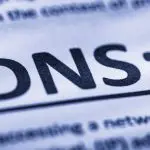An unsafe site is a bad business card that penalizes greatly.
Have you noticed the green padlock that appears in the address bar almost all websites?
Well the green padlock, which currently represents the security of a website, will soon disappear from Google Chrome (at the time we write, we are in May 2023), to be replaced by a solution that Google considers more clear and effective.
Padlock or not padlock, what matters is solving the security problems of the site, because a website that does not use a secure connection, can not guarantee the protection of the information shared by the people who visit it.
This information is sensitive data – login credentials, payment information, or other – that can be easily intercepted and stolen, putting privacy and security at serious risk.
If you find yourself in this situation, in this article let’s see what the causes of the insecure site are, which can be different but mostly depend on an expired, invalid or absent SSL (Secure Sockets Layer) certificate, or on server configuration errors, or even on insecure content. And let’s also look at how to fix the problem, a problem that is likely to drive away your visitors and potential customers.
Why it is important to have a secure website
Having a secure and reliable website is important to your online reputation, otherwise people will stay away from it knowing their data is at risk.
Having a secure and reliable website is important to your online reputation, otherwise people will stay away from it knowing their data is at risk.
Here are the highlights you can remember:.
- an unsafe site indicates that the connection with that page is not protected
- sites starting with “http://” are not secure because they do not have an SSL certificate
- HTTPS ensures a secure connection to the transmitted data.
And Google also takes this into account.
It is no mystery hidden among its 200 ranking signals that Google prefers secure websites because they are more reliable.
Google cares about the satisfaction of users, who want to offer an excellent service in its SERPs. That’s why for the same content quality, a HTTPS site with a valid SSL certificate goes to the top.
Let’s come to the causes of the unsafe site.
Causes of unsafe site and how to fix

To make a website secure, certain measures need to be taken such as using valid SSL certificates, more complicated passwords, updated software, and HTTPS (HTTP Secure) protocol. In addition, it is important to repeat some vulnerability and security testing to identify any shortcomings or errors and correct them.
In this case, if you can’t solve it yourself, usually a good hosting service will step in upon request for assistance.
By default, however, when purchasing web space, a provider provides packages that also include HTTPS and the SSL validation certificate.
If you did, then very trivially, the SSL certificate may be invalid or just expired. Or it often happens that some internal links are left in HTTP.
We go into detail to see all the steps to improve an unsafe site.
Invalid or expired SSL certificate
The SSL certificate is a security technology that encrypts data exchanged between the website and the user, a file that contains information issued by a certification company, which allows a secure connection between the server and browser to be established.
If the certificate is invalid or expired, your browser will report the site as unsafe.
how to resolve
You should purchase the SSL certificate that gives you the ability to connect to your site’s server securely by encrypting visitor data.
One can rely on several SSL certificate providers, such as Let’s Encrypt, Comodo, and Symantec, or one canrequire the SSL certificate from one’s provider who, as stated above, should be able to offer solutions that include this implementation.
Missing the HTTPS protocol configuration
HTTPS is the security protocol that provides encryption of data shared between website and users. If the site has not configured HTTPS, it is not secure at the time it is accessed.
how to fix
If you have purchased an SSL certificate, which is valid, you should configure the site to switch from HTTP to HTTPS protocol.
Even after enabling HTTPS, the browser may still show icons representing a non-secure condition.
The explanation is simple: one or more links to elements within the page are still in HTTP (e.g., links to css, javascript, images, video, pdf, etc.).
If all these links are not in HTTPS, then an alert appears on the browser address bar that reads “Connection not fully secured”. This alert, however, is not a technical problem; HTTPS continues to work.
How do you see which links are in HTTP?.
The ways are few: 1. verify everything by hand, checking each page with the resources inside and see at the url to which they point, or take a shortcut if you use a CMS that allows it.
For example, in WordPress there is the plugin SSL Insecure Content Fixer.
The highlights:
- SSL certificates provided by your provider can be generated through a wizard in the cpanel control panel
- to activate the SSL certificate you need to generate a Certificate Signing Request (CSR)
- remember to configure the HTTPS.
SSL certificate installation errors
One of the most common causes of unsafe site is incorrect installation of SSL certificate.
To see if the SSL certificate has been installed properly, you can use some free tools such as Qualys SSL Lab or GeoTrust Check, which run a series of checks on the site’s TLS/SSL configuration notifying you of any problems or anomalies.
If errors have occurred, you can correct them with instructions that notify the tool.
- Check that an SSL certificate is installed correctly.
- Use free SSL control tools.
- Please correct any errors.
Other ways to improve site security
Online security issues are not only related to the presence of the SSL certificate or HTTPS. They are many and varied, and are the subject of the much topical subject of cyber security.
Highlighted in a list of the biggest risks one faces on the web.
- Malware or malicious scripts that run on the user’s computer without his or her knowledge. This malware can steal personal information, create backdoors for unauthorized access to the system, or damage the computer.
- Phishing refers to a fake website that resembles that of a well-known institution, entity, or company, such as a bank, post office, or law enforcement agency, and, based on this resemblance, ask users to enter their login credentials or, even worse, to make payments.
- Identity theft: hackers who manage to take over a person’s identity can act on his or her behalf to commit fraud.
How to defend against risks on the web

There are several causes that can jeopardize the security of a site, but just as many ways to defend yourself very well.
Attention to the vulnerability of the software
If the website uses outdated or outdated software, it may be subject to cyber attacks.
Cybercriminals can exploit these vulnerabilities to access user data or to install malware on the website.
Update the website
Be sure to always use the newest version of your CMS, plugins, and website themes.
These precautions are critical to keeping your website safe from vulnerabilities.
Use secure passwords
It is important to enter secure and complex passwords to access the website, including uppercase and lowercase letters, numbers and special characters.
If the website requires users to register and create a password, it should be structured and difficult to guess.
Use security plugins
There are many security plugins available for CMSs such as WordPress, Joomla and Drupal. These plugins can help detect and prevent cyber attacks.
Monitor your own website
It is good practice to monitor the website to detect any suspicious or abnormal activity.
There are many monitoring tools, among them one of the most comprehensive and powerful is undoubtedly Google Search Console.
Within Search Console you can see warnings about the existence of malware or security issues.
In conclusion, surely a safe and secure website is essential if you have an online business, to ensure adequate services to people, but also to improve the SEO performance of the site.
If you still think you need help to solve the unsecure site problem, please write or call us.






